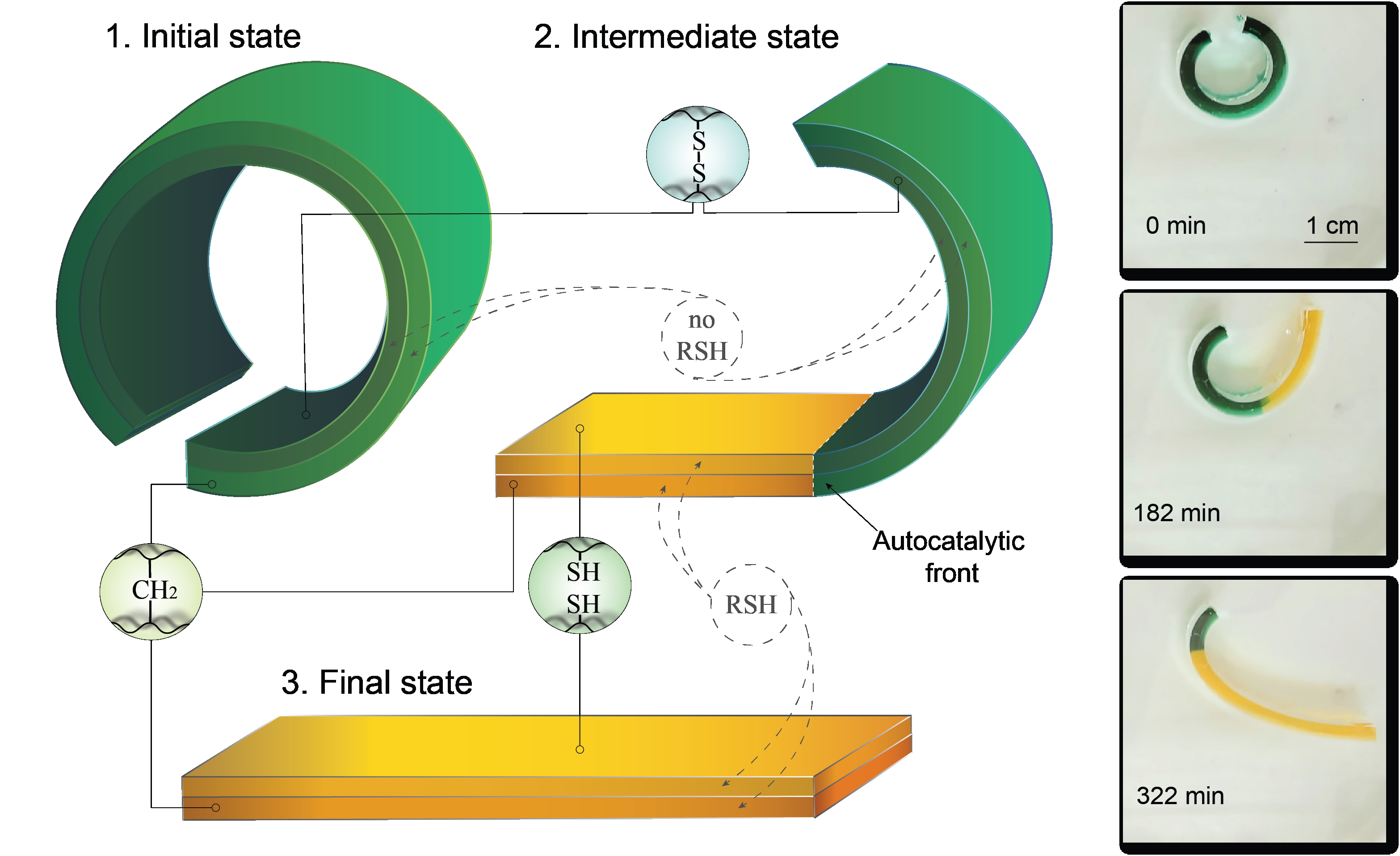3979021
Spatiotemporal control of hydrogel actuators by autocatalytic reaction networks
Date
March 17, 2024
Explore related products in the following collection:
Related Products
Collective chemomechanical oscillations in active hydrogels
We report on the collective response of an assembly of chemomechanical BelousovZhabotinsky (BZ) hydrogel beads…
Surface engineering of biomolecular condensates with multivalent nanoparticles
The living cell operates as a highly intricate and harmonized system, characterized by compartmentalization at various length scales. These distinct compartments work in concert to coordinate numerous concurrent biochemical processes, ensuring the cell's proper functioning…



